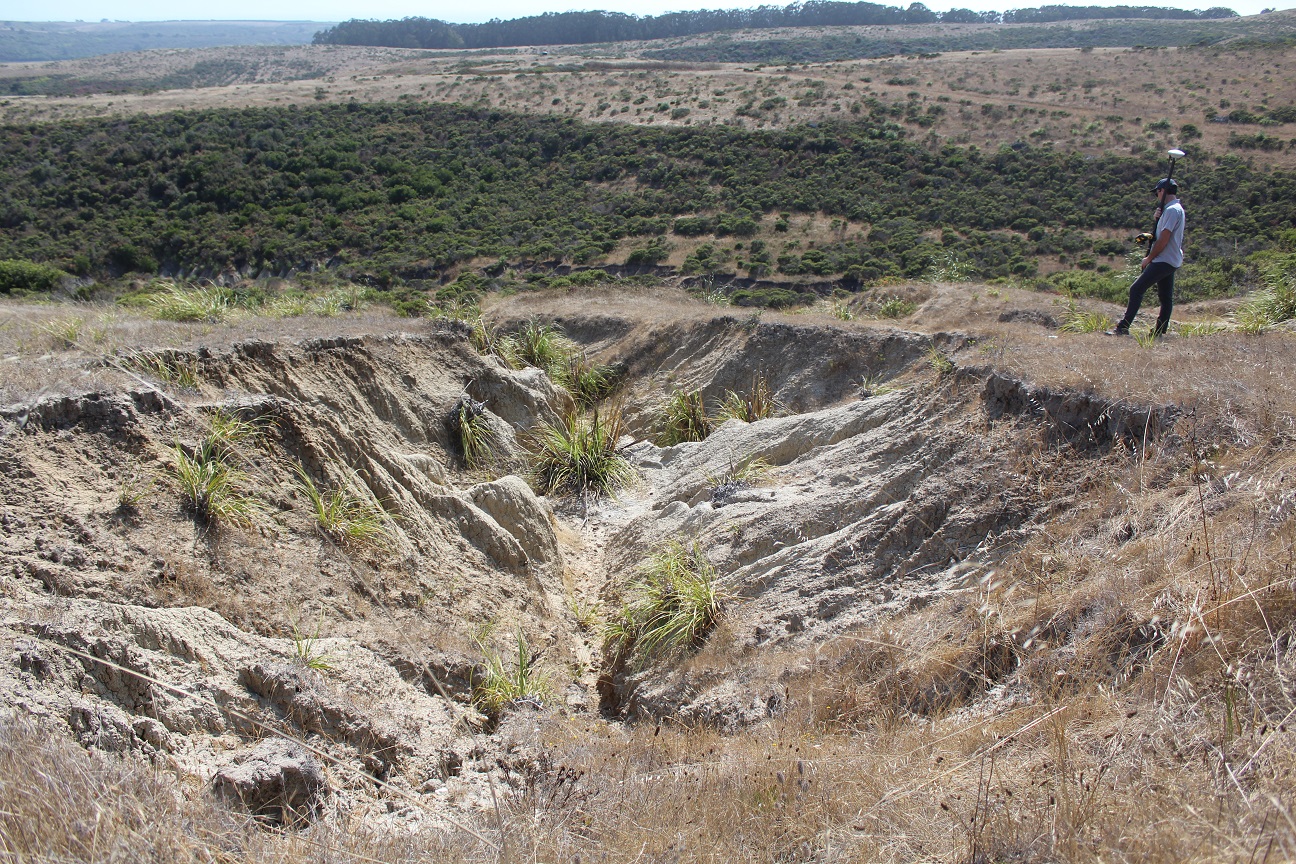Multi-temporal DEM and Land Use Analysis for Determining Gully Formation

Abstract
Soil erosion has become a serious concern for the Pescadero Watershed in San Mateo County. Since the late 19th century, extensive gully networks have formed due to human land use such as cattle grazing and agriculture. Excess sediment from gullies impairs aquatic habitats and the stream system’s ability to carry flood waters. This study presents a group of methods that can be used to indicate the status of gully network change in the Pescadero Watershed. Remote sensing techniques are beneficial because they can minimize the time needed for more traditional ground survey methods. Digital Elevation Models (DEMs), from relatively recent LiDAR datasets, were used in change detection models or DEMs of Difference (DoD). This study developed a contemporary DEM for 2018 using Structure-from-Motion (SfM) photogrammetry, which is an approach using a series of unordered images. This produced a high-resolution elevation model as well as an RGB orthomosaic image for two-dimensional analysis. Since regional gully networks primarily consist of barren soil, the SfM method is particularly successful in gathering elevation data that highlights erosion patterns. In addition, grid elevations in each successive DEM were subtracted from the more recent DEM to produce maps that show areas of deposition, erosion, or no change. In these models, negative values represent areas of erosion, and positive values represent areas of deposition. Based on the Root Mean Square Error (RMSE) of each DEM, a Minimum Level of Detection ( ) highlighted areas of significant elevation change. The study found that results were highly dependent on the where DEMs with lower errors participating in a DoD provided results with a higher level of detail and confidence. SfM techniques yielded the most accurate results, especially with their ability to detect finer-scale erosion and vertical accuracy. In order to analyze finer-scale bank erosion, the study incorporated two-dimensional analysis using aerial imagery and an object-based image segmentation workflow. The classification result from the image segmentation output was successful in delineating a barren soil class representing gullies as objects for 2001. Given the relatively small study site (3.27 ha), manual digitizing methods were used where three-dimensional analyses was not feasible. This study concluded that combining a DEM derived from SfM and DEMs from LiDAR in a DoD, provided information to determine gully geomorphic change. This information will ideally guide resource management practices for the Pescadero Watershed and encompassing areas affected by gully erosion.